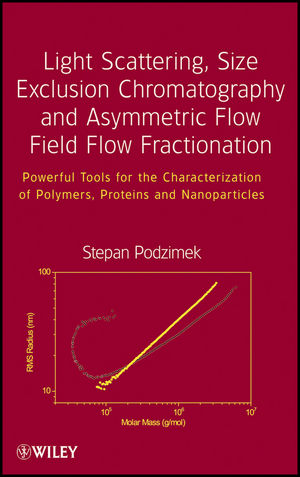Light Scattering, Size Exclusion Chromatography and Asymmetric Flow Field Flow Fractionation: Powerful Tools for the Characterization of Polymers, Proteins and NanoparticlesISBN: 978-0-470-38617-0
Hardcover
372 pages
June 2015
 This is a Print-on-Demand title. It will be printed specifically to fill your order. Please allow an additional 10-15 days delivery time. The book is not returnable.
|
||||||
This book serves as a complete compendium of three important methods widely used for the characterization of synthetic and natural polymers—light scattering, size exclusion chromatography (SEC), and asymmetric flow field flow fractionation (A4F). Featuring numerous up-to-date examples of experimental results obtained by light scattering, SEC, and A4F measurements, Light Scattering, Size Exclusion Chromatography and Asymmetric Flow Field Flow Fractionation takes an all-in-one approach to deliver a complete and thorough explanation of the principles, theories, and instrumentation needed to characterize polymers from the viewpoint of their molar mass distribution, size, branching, and aggregation. This comprehensive resource:
-
Is the only book gathering light scattering, size exclusion chromatography, and asymmetric flow field flow fractionation into a single text
-
Systematically compares results of size exclusion chromatography with results of asymmetric flow field flow fractionation, and how these two methods complement each other
-
Provides in-depth guidelines for reproducible and correct determination of molar mass and molecular size of polymers using SEC or A4F coupled with a multi-angle light scattering detector
-
Offers a detailed overview of the methodology, detection, and characterization of polymer branching
Light Scattering, Size Exclusion Chromatography and Asymmetric Flow Field Flow Fractionation should be of great interest to all those engaged in the polymer analysis and characterization in industrial and university research, as well as in manufacturing quality control laboratories. Both beginners and experienced can confidently rely on this volume to confirm their own understanding or to help interpret their results.



